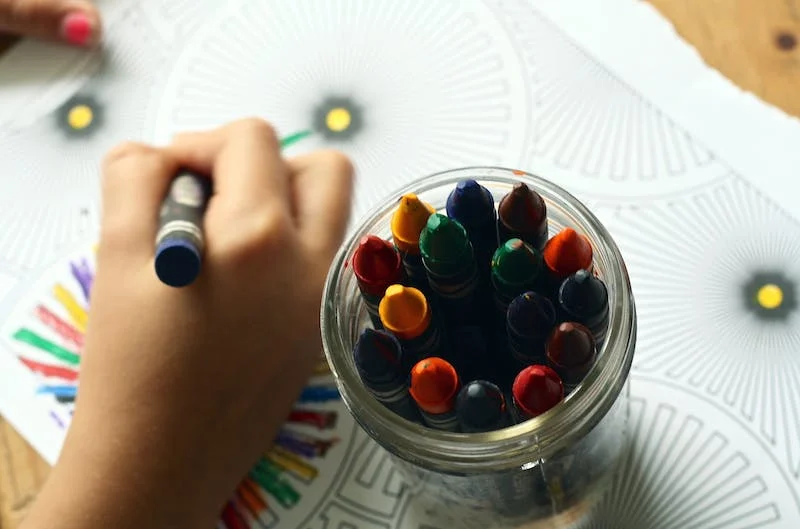How do you teach students mindfulness? Consider stressed-out parents who work from home while attempting to home-school kids who are restless but overstimulated, as well as the glaring lack of social interaction.
When I learned that mindfulness helps reduce stress, I was interested in learning more because our children may be experiencing the same levels of anxiety, agitation, and stress as we are right now.
Understanding how to practice meditation, or simply being in the present, is a great way for both children and adults to feel better mentally, feel more relaxed, and, in particular trying moments, have some fun.
The good news is that mindfulness benefits every one of us, even weary parents, overly emotional children, and even anxious students. Give it a shot before you write it off as foolishness (I was one of these individuals); what you got nothing to lose?
Mindfulness meaning.
The fundamental ability to be completely aware of our current location and activities is known as meditation. Honestly, knowing that one is alive, involves cultivating a keen awareness of one’s body, mind, and environment and refraining from becoming unduly reactive to events around us. All of us possess it; we simply need to learn to appreciate it.
“In the hustle of today, we all think, seek, and demand too much, forgetting the delight of simply being.” Tolle, Eckhart. Although your child’s education is still vital, homeschooling is difficult. If your child is having trouble focusing and you’ve done everything you can to interest them, consider sending them to a traditional school.
if individuals don’t complete every item on their to-do list that day, don’t feel inadequate. Taking a pause and engaging in some enjoyable mindfulness exercises can tremendously benefit both parents and kids. Keep in mind that your own and your child’s emotional well-being are now equally as essential as their academic performance.
Advantages of mindfulness
There are numerous advantages for kids, including improved mental health, improved interpersonal and behavioral skills, training to recognize facts, and promoting calmer, more engaged behavior.
Children who practice mindfulness find it easier to control complex emotions that they are unable to understand, focus better, feel less anxious, and develop compassion. The practice of mindfulness can strengthen relationships and benefit your physical health.
Younger children and mindfulness
Smaller kids certainly have a harder time staying still for even a minute, so trying to convince them to sit quietly cross-legged for 30 minutes of meditation won’t work. However, there seem to be mindfulness exercises created expressly to aid young children in mastering the method and cultivating their attentive thought.
Any children’s mindfulness activity should be brief and simple.
Practice it with them and start when they aren’t jumping around with enthusiasm. Children learn by imitation, so if you model good behavior they will probably do the same. You can start with very basic breathing techniques.
Children learn by imitation, so if you model good behavior they will probably do the same. You might start with very basic breathing techniques before moving on to some mindfulness exercises to help them concentrate.
1. Coloring

By asking us to concentrate on how we select and apply color to a design, mindful coloring forces us to be mindful of the moment. We let go of any ideas regarding today, yesterday, or what we will do after this procedure, akin to meditation. Concentrate only on the patterns, hues, and hand-eye coordination required to complete a mandala coloring page.
2. Influence Your Environment

Clearing out the clutter in your environment can also improve your mindfulness. Every object ought to serve a purpose. Donate any household things that are no longer useful to you, express gratitude for what they have provided, and give them a new voyage with someone who will value them more.
3. Observant Listening

I play some of my favorite relaxing music or some ambient sounds when I’m trying to learn mindful listening. The most challenging aspect of this exercise is that you could want to attempt and control the noises or look for patterns in what you hear. Give up on the sounds and allow them to go through you as they please. During this exercise, your sole responsibility is to bring your straying mind back to the noises.
4. Considering Conversation

Being entirely present during a conversation is the goal of a mindful conversation. Your entire focus is on what the other person is saying while you are having a mindful discussion. To achieve this, you must put electronics away, avoid distractions, and get practice hearing without offering your ideas.
5. Observant Walking

Being aware is not limited to sitting or lying still. I suggest mindful walking if you find it difficult to stop moving. It’s crucial to keep your attention on one subject the entire time you’re walking and avoid letting your thoughts wander. When stepping outside, there are several things to pay attention to.
Pay close attention by:
- Try to listen to the sound of your heel slamming into the pavement,
- The sound of birds singing, and the air rustling the trees as you walk.
- Feeling your garments against your skin, the chilly air against any exposed flesh, the bright sun on your face, and the wind through your hair.
- Smelling things like fresh air, flowers, trees, and even disagreeable odors can help you stay present. observing: a sunrise’s dazzling colors
6. Morning Intention: Arise and Smile

A morning routine offers a solid framework for the remainder of the day. Whatever you decide to perform as part of your morning routine is irrelevant; what matters is that it calms your mind and promotes tranquility.
Making an intentional morning routine will assist you in preventing feelings of overwhelm, reactivity, or having an uncontrollable day. Everybody has a different morning routine that works best for them. Write about your goals, aspirations, desires, your mantras for today, and anything else that comes to mind.
7. Exercise Your Awareness

Showering provides a relaxing sensory experience that creates the perfect environment for both physical and mental cleansing. On a relatively small scale, you can use this method while washing your hands.
A manual for practice.
- Set a suitable pressure level and temperature for the water.
- Concentrate on your respiration as you close your eyes; when you exhale pessimism, inhale optimism.
- Run your entire body down as soon as you feel the water contact your back. Turn around so that water is splashing in your face. Experience the feelings.
- As you bathe yourself, apply the soap; pause to take in the aromas.
- Consider the beauty and cleansing power of the water as you listen to its sound of it.
8. Give your waiting some meaning.

Waiting for other people can be very frustrating for those who believe they never have enough time. It’s a terrific chance to relax motionlessly and observe everything around you when you’re waiting for someone or something. Perhaps you are expecting a zoom call to begin; make use of this time to stroll around and take everything in as if it were your first visit.
Consider taking advantage of the time you are waiting in a coffee shop to listen to the noises of the customers and the rattling of cups. Every waiting time offers the chance to take in your environment with all of your perceptions. When we are overly preoccupied with thoughts, we feel less than we would like to.
9. Being mindful of the Earth

Whether you’re in your car, at your workstation in the office, or at your residence next to your beloved recliner, flick opens a window. You are welcome to close your eyes and take in the noises and fragrances of the outside world while feeling the breeze on your face.
Try Earthing or Bonding: refers to coming into contact with electrons from the Earth’s surface while standing outside or sitting on the grass
10. Mindful Dining

Particularly while participating in weight loss programs, people should practice relearning far more habits than they learn different ones. This is because many of us have terrible eating habits as children, which causes us to be less aware of the food we eat. As a result, it might be difficult for people to discriminate between true hunger signs and unpleasant sensations like boredom.
11. Regular Breathing

Paced breathing, in which the duration of the inhalation and exhalation, and exhales is deliberately altered, is another sort of breathwork. Because our pulse rate somewhat slows during the exhale, it can be beneficial to have a longer exhale than an inhale. Try breathing in for five counts and out for seven. Make sure your breaths are regular by using the techniques from the earlier exercises (deep breathing).
12. Gradual Relaxation of the Muscles

Tightening and relaxing particular different muscles is referred to as Muscle Relaxation Progressively. Put as much strain on your head and shoulders, for instance, by scrunching them up to your temples. Count softly to three to let out all that tension. Continue doing that with your wrists, arms, shoulders, and all of your other motor units.
Summary
There is no one, ideal method to cultivate mindfulness. There are many other mindfulness exercises available; choose the ones that are most effective for you from the list of these 12 entertaining ones. I urge you to treat them all like samples on a platter. Begin with a small taste and gauge your reaction. If you find one or two of these activities enjoyable, include them in your daily schedule and increase the duration and frequency of your workouts until they become a habit.
